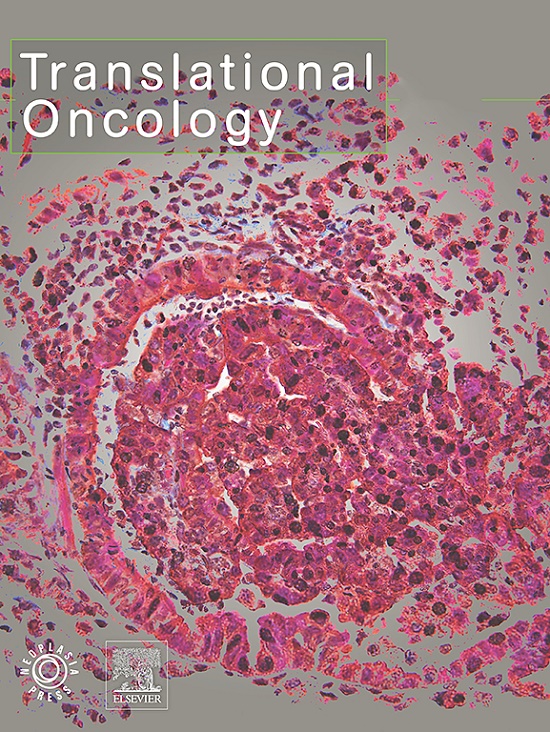CDK4/6 inhibitors promote PARP1 degradation and synergize with PARP inhibitors in non-small cell lung cancer
IF 5
2区 医学
Q2 Medicine
引用次数: 0
Abstract
Despite widespread deregulation of CDK4/6 activity in non-small cell lung cancer (NSCLC), clinical trials with CDK4/6 inhibitor (CDK4/6i) as a monotherapy have shown poor antitumor activity. Preclinical studies indicate that CDK4/6i may collaborate by influencing DNA damage repair pathways during radiotherapy. Since PARP1 expression was also significantly upregulated in NSCLC, we analyzed the efficacy of combining PARP1 and CDK4/6 inhibition in NSCLC models. We found that CDK4/6is synergize with PARP1 inhibitors (PARPis) to inhibit the clonogenic growth of RB-proficient NSCLC models. This synergy correlates with increased accumulation of DNA damage, interrupted cell-cycle checkpoints, and enhanced apoptotic cell death. Mechanistically, we showed that CDK4/6is promote PARP1 protein degradation, which lead to decreased availability of DNA repair factors involved in homologous recombination and suppression of DNA repair competency. Furthermore, we showed that PARP trapping is engaged in this synergy. We then confirmed that combining PARPi and CDK4/6i blocked the growth of NSCLC xenografts in vivo and patient-derived explant models ex vivo. Our data reveal a previously uncharacterized impact of CDK4/6i on PARP1 levels in RB-proficient NSCLC models and the engagement of PARP trapping in the synergy between CDK4/6i and PARPi. Our findings suggest combining CDK4/6i with PARPi could be a viable therapeutic strategy for patients with RB-proficient NSCLC.
CDK4/6抑制剂在非小细胞肺癌中促进PARP1降解并与PARP抑制剂协同作用。
尽管CDK4/6在非小细胞肺癌(NSCLC)中的活性被广泛解除,但CDK4/6抑制剂(CDK4/6i)作为单一疗法的临床试验显示抗肿瘤活性较差。临床前研究表明,CDK4/6i可能在放疗期间通过影响DNA损伤修复途径发挥协同作用。由于PARP1在NSCLC中表达也显著上调,我们分析了PARP1和CDK4/6联合抑制在NSCLC模型中的效果。我们发现cdk4 /6与PARP1抑制剂(PARPis)协同抑制rb精通的非小细胞肺癌模型的克隆生长。这种协同作用与DNA损伤积累增加、细胞周期检查点中断和凋亡细胞死亡增加有关。在机制上,我们发现cdk4 /6促进PARP1蛋白降解,导致参与同源重组的DNA修复因子的可用性降低,并抑制DNA修复能力。此外,我们还表明PARP捕获参与了这种协同作用。然后,我们证实PARPi和CDK4/6i联合在体内和患者来源的体外移植模型中阻断了非小细胞肺癌异种移植物的生长。我们的数据揭示了在rb精通的NSCLC模型中,CDK4/6i对PARP1水平的先前未被表征的影响,以及PARP在CDK4/6i和PARPi之间的协同作用中被捕获的参与。我们的研究结果表明,结合CDK4/6i和PARPi可能是一种可行的治疗策略,用于rb精通的非小细胞肺癌患者。
本文章由计算机程序翻译,如有差异,请以英文原文为准。
求助全文
约1分钟内获得全文
求助全文
来源期刊

Translational Oncology
ONCOLOGY-
CiteScore
8.40
自引率
2.00%
发文量
314
审稿时长
54 days
期刊介绍:
Translational Oncology publishes the results of novel research investigations which bridge the laboratory and clinical settings including risk assessment, cellular and molecular characterization, prevention, detection, diagnosis and treatment of human cancers with the overall goal of improving the clinical care of oncology patients. Translational Oncology will publish laboratory studies of novel therapeutic interventions as well as clinical trials which evaluate new treatment paradigms for cancer. Peer reviewed manuscript types include Original Reports, Reviews and Editorials.
 求助内容:
求助内容: 应助结果提醒方式:
应助结果提醒方式:


